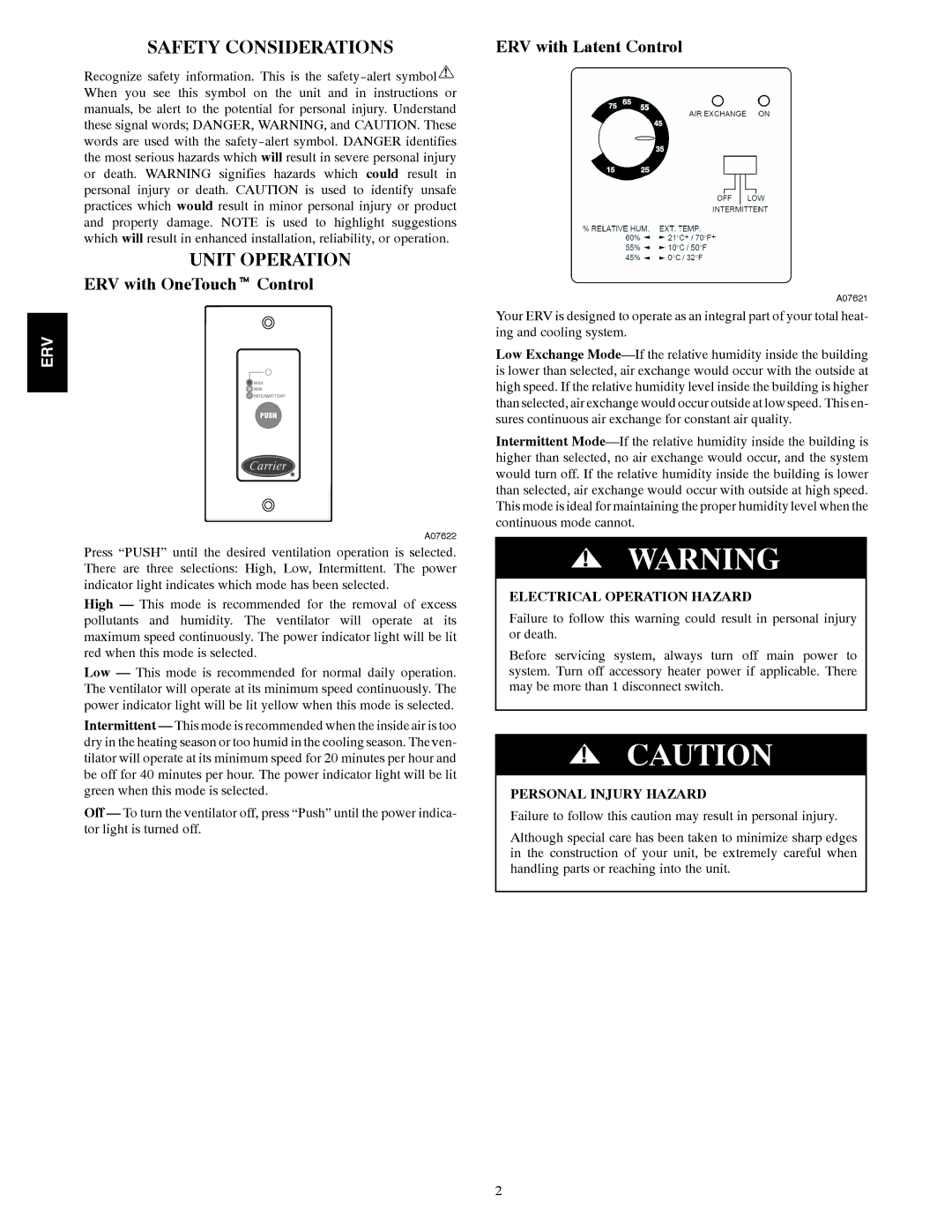ERVCCSVB, ERVCCSHB, ERVCCLHA specifications
The Carrier ERVCCLHA, ERVCCSHB, and ERVCCSVB are advanced energy recovery ventilators designed to enhance indoor air quality while optimizing energy efficiency in commercial and residential settings. These models are engineered to provide outstanding ventilation solutions, ensuring that spaces remain fresh and comfortable without overwhelming energy costs.One of the main features of the Carrier ERV series is their ability to recover energy from outbound stale air. This is achieved through a heat exchanger that transfers thermal energy between the incoming fresh air and outgoing exhaust air. By recapturing heat in winter and providing cooling in summer, these units significantly reduce the load on heating and cooling systems, helping to lower energy bills.
The ERVCCLHA is designed with a compact footprint, making it suitable for installations in tight spaces. It boasts a user-friendly control interface that allows for precise management of airflow and energy recovery settings, ensuring optimal performance tailored to specific building needs. The unit operates quietly, contributing to a comfortable indoor environment without excessive noise.
In contrast, the ERVCCSHB model focuses on high capacity, making it ideal for larger commercial applications. This model incorporates advanced filters to reduce airborne particulates and allergens, enhancing overall indoor air quality. Additionally, the ERVCCSHB is equipped with robust construction materials that ensure durability and longevity, even in demanding environments.
The ERVCCSVB variant is designed for versatility, allowing for variable installation configurations. It features integrated smart technology that monitors and adjusts ventilation based on occupancy levels and air quality metrics. This ensures that energy is not wasted when spaces are unoccupied while maintaining optimum ventilation when needed.
All three models utilize advanced materials and construction techniques to ensure high efficiency and reliability. They are also designed to comply with the latest industry standards, making them a responsible choice for environmentally conscious consumers.
Overall, the Carrier ERVCCLHA, ERVCCSHB, and ERVCCSVB represent a significant advancement in energy recovery ventilation technology. With features that prioritize efficiency, comfort, and air quality, these units deliver a comprehensive solution for maintaining healthy indoor environments while effectively managing energy consumption. Whether for residential or commercial use, the Carrier ERV models stand out as a premier choice for modern ventilation needs.

